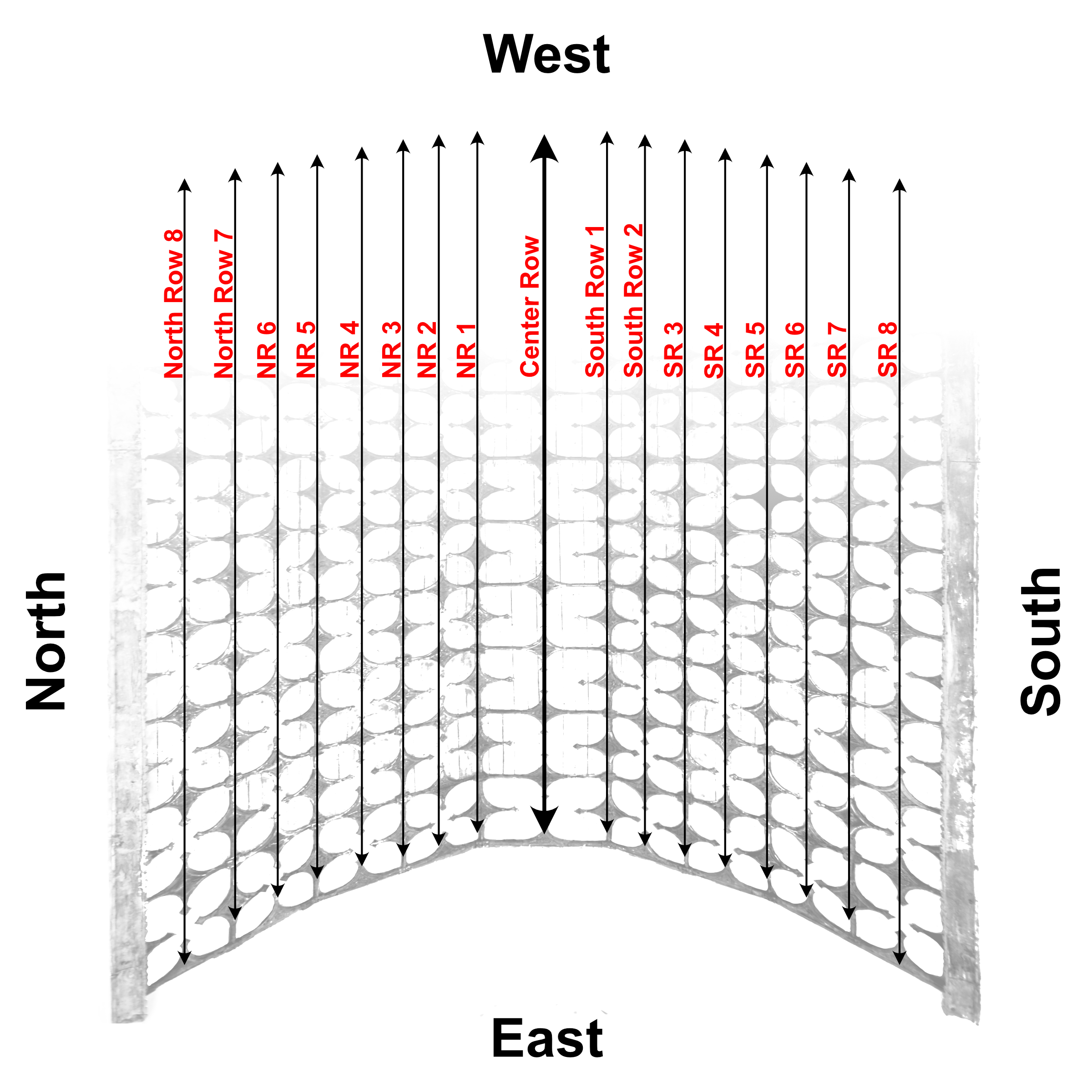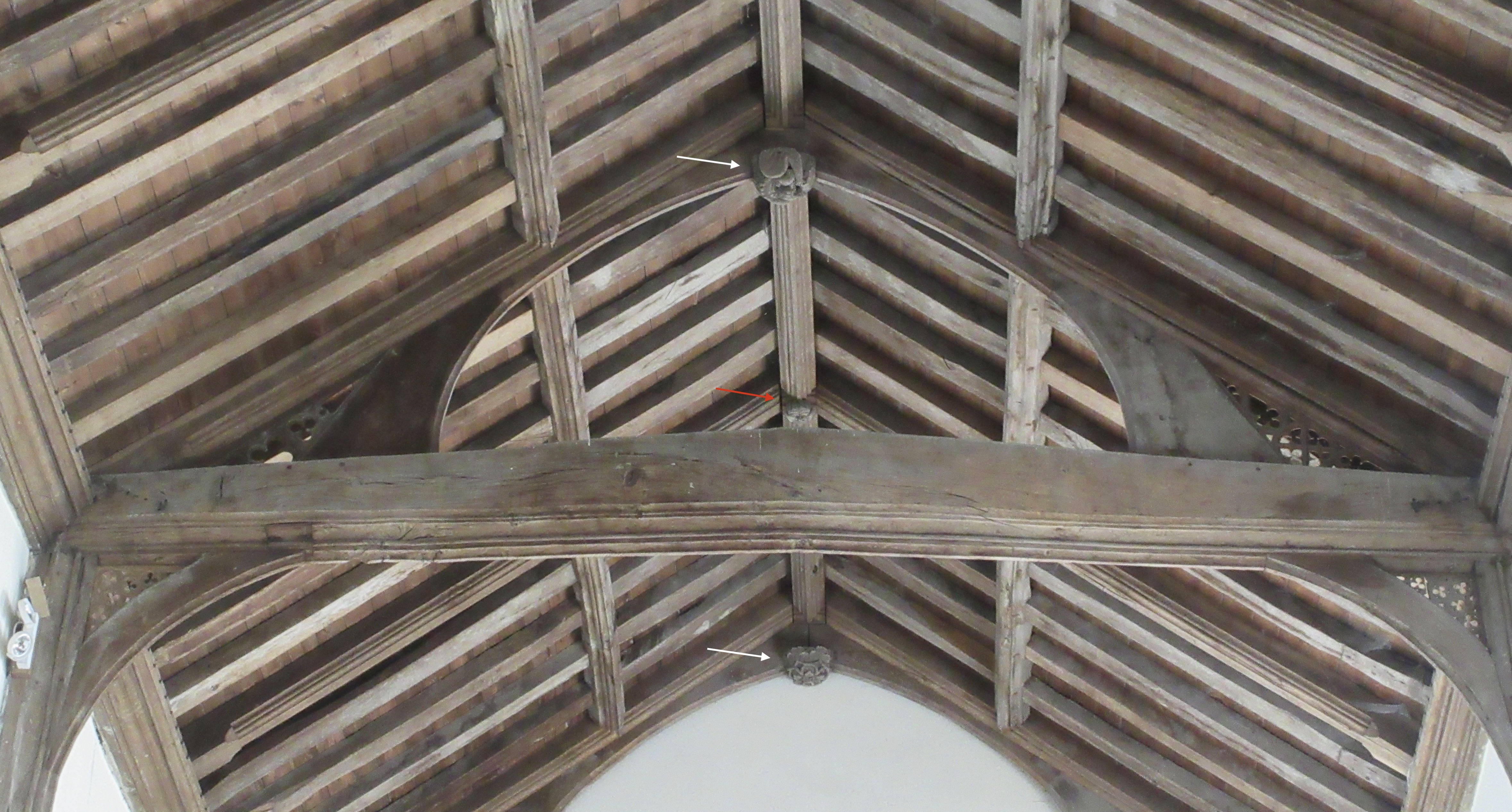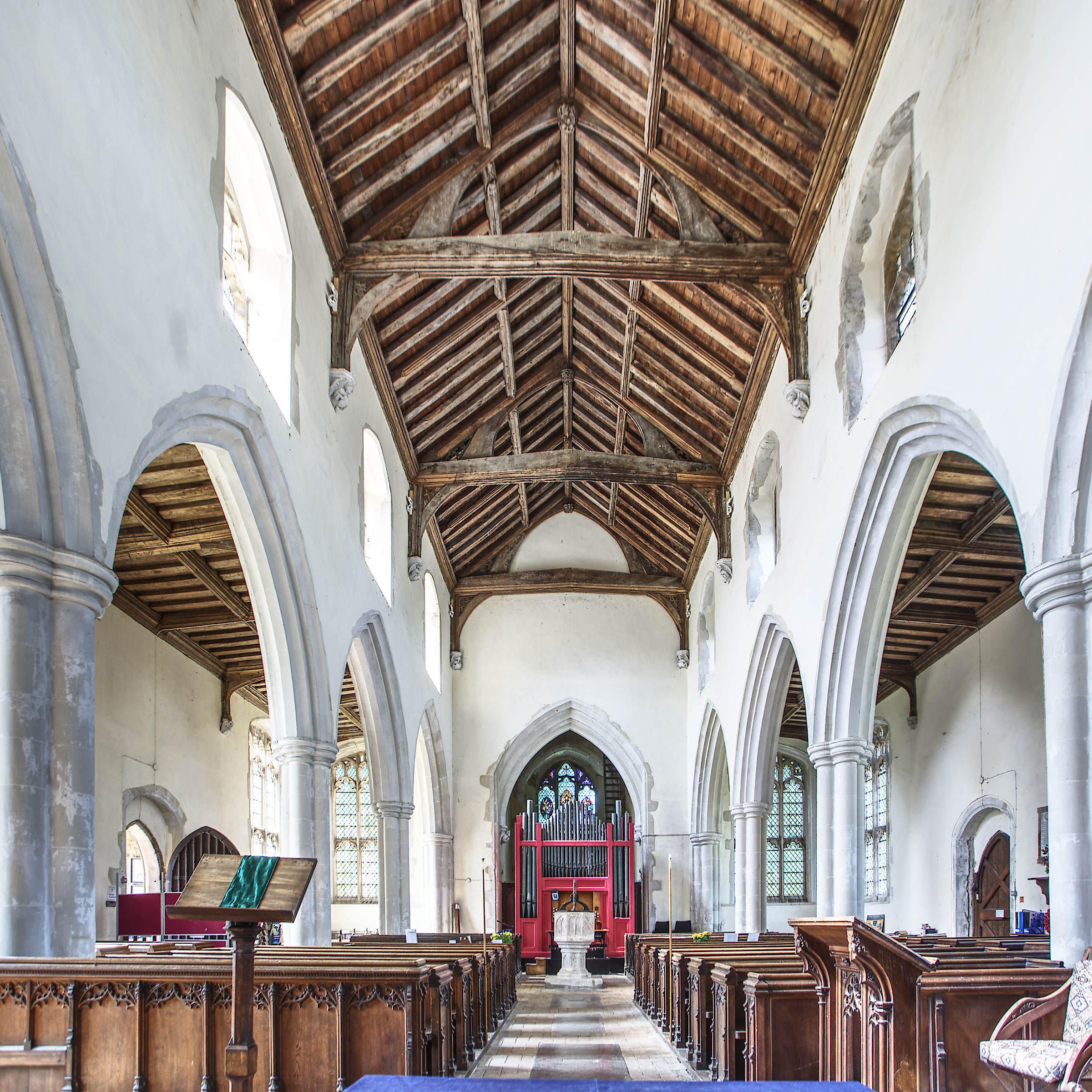NORTH CEILING
CENTRE CEILING

The Nave Carvings
Along the centre beam of the nave there are a set of carvings that appear to pre-date those of the chancel. From their style and dress these have been dated as early 15th century by historians (Paine, Peverley, Luxford, 2024). Some of them still bear traces of their original paint (Fig. 4,6 and 8).
The roof of the nave was lowered from its original mediaeval pitch in 1857, and then partially raised again in 1888, see Fig 10 below (Paine, 2024). The larger of these carvings (Fig. 1, 3, 5, 7 and 9) may well be in their original positions on the supporting spandrels crossing the church from north to south, as these may have been retained and merely re-shaped, but the smaller ones on the east west centre beam must have been repositioned, as the new, lower centre beam would not have been present in the mediaeval roof (Fig 11).
Further evidence for this comes from the fact that these smaller carvings have been attached by large nails crudely driven through the centre of the carvings (See Fig. 2, 4 and 6). We don’t know for sure if these carvings were on the original mediaeval roof, obtained from elsewhere in the church, or even sourced from another building. As with the chancel roof carvings, the smaller ones are very difficult to see from the ground.
The nave carvings can be grouped as:
1.Depiction of a rose at the East end (Fig.1) and West end (Fig. 9), Mary the mystic rose, very common in mediaeval church carvings (Paine,2024). Also a symbol of the Passion of Christ (S.P.)
2.Foliate heads (green men). These have a variety of tendrils spewing from their mouths, leaves for hair, grapes for ears and beards.
(Figs. 5 and 7)
3.Human heads, often wearing a cap (Figs. 2, 4, 6, 8)
4. A gargoyle type head (Fig .3) pulling open his mouth and sticking out his tongue, an insult also seen on one of the carvings on the chancel ceiling, and still in use today!
(All photographs courtesy of Pat Spillane.)
References:
Clive Paine, (2024)- personal communication.
Professor Sarah Peverley, (2024) – (ditto).
Professor Julian Luxford (2024) – (ditto).

Fig 10.
The stonework that formed a seal between the bell tower and the mediaeval roof (yellow arrow), illustrating the fact that it mirrored that of the current chancel roof. The small window, (red arrow) partially obscured by the Victorian roof, is the Sanctus bell window. This was used in Catholic services in this church before the Reformation for the bell ringer to synchronise his bell ringing with events in the chancel, something still done in Catholic services today.

Fig 11.
One of the spandrels which span the church, and are almost certainly part of the original mediaeval roof structure. They appear to have had their arches lowered when the roof was lowered, but the larger carvings (white arrows) may well have been left in situ as they were on the underside of the original structure, and therefore not affected by the lowering. The smaller carvings (red arrow) are on a beam that would not have been present at that time, and so must have been moved from elsewhere.
